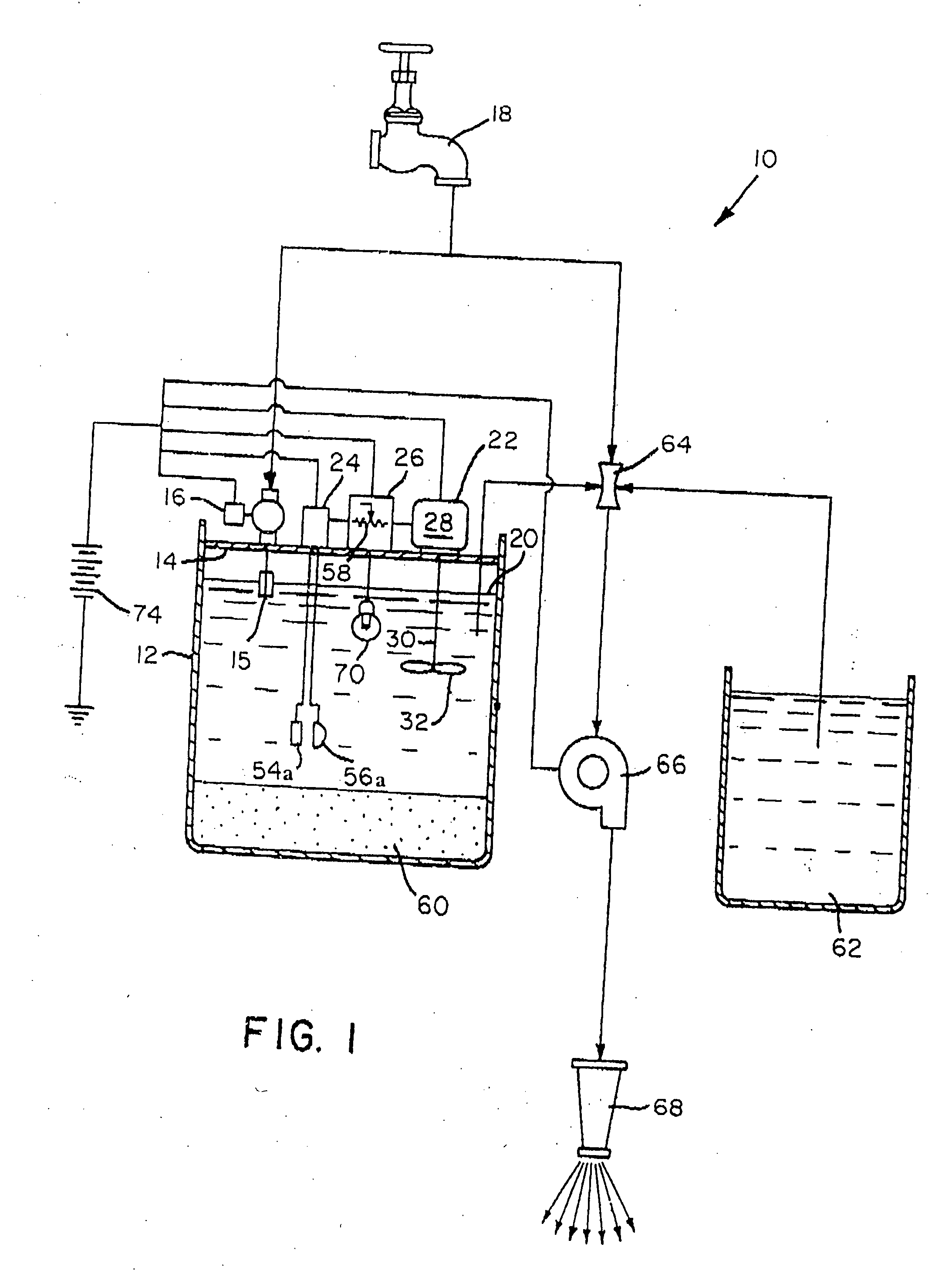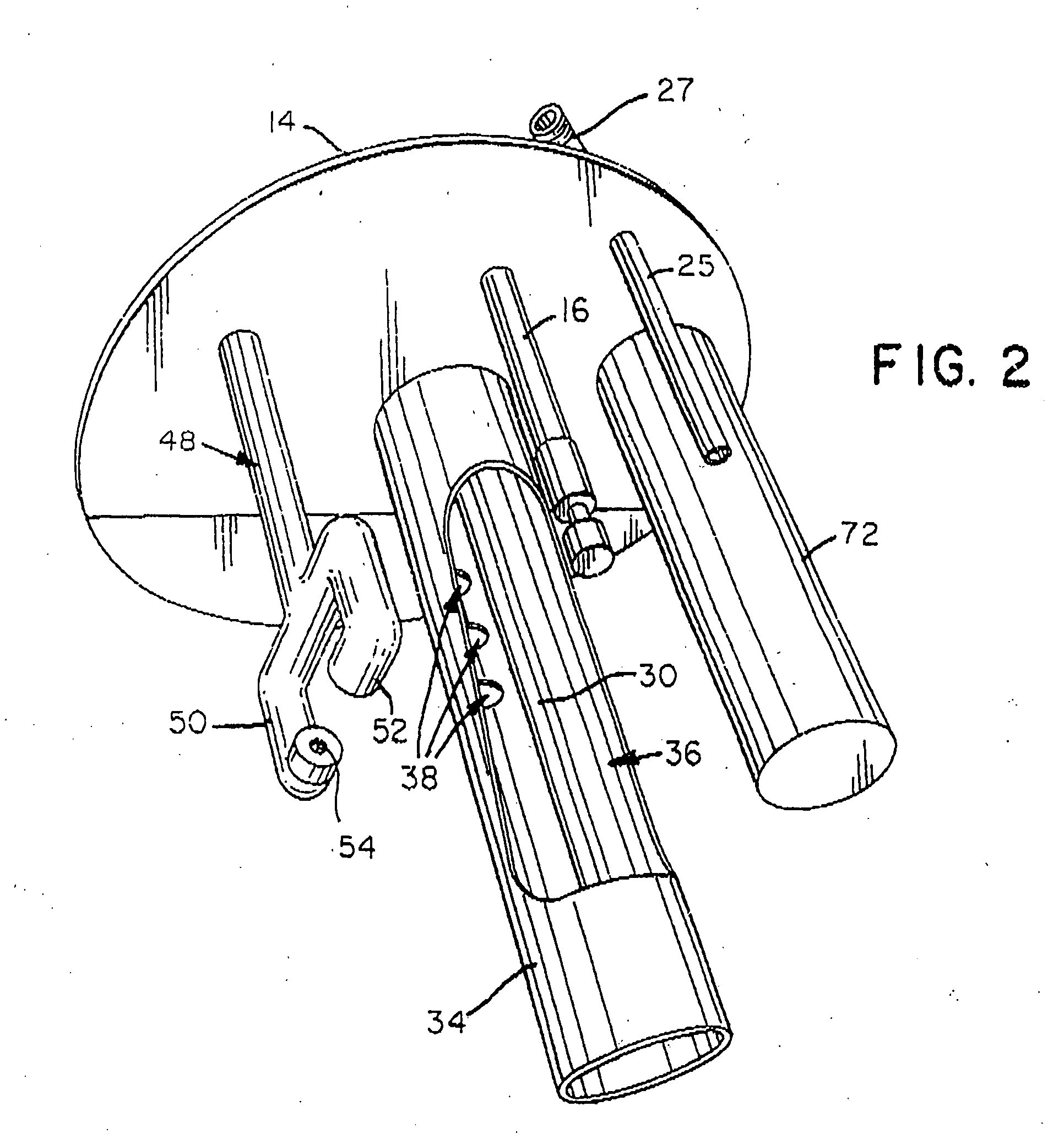Apparatus for dissolving a solid material in a liquid
a technology of liquid dissolving apparatus and solid material, which is applied in the direction of dissolving, dissolving with driven stirrers, instruments, etc., can solve the problems of reducing profits, increasing handling costs, and increasing the amount of water in a detergent, etc., and achieves low cost of operation, low cost, and reliable
- Summary
- Abstract
- Description
- Claims
- Application Information
AI Technical Summary
Benefits of technology
Problems solved by technology
Method used
Image
Examples
Embodiment Construction
[0024] Referring now to the FIGS., an apparatus for dissolving a solid material in a liquid in accordance with the present invention is shown at 10. Apparatus 10 includes an open-topped container 12 upon which is positioned a hinged lid 14. On lid 14 is mounted a valve assembly including a solenoid-actuated valve 16 that permits liquid from a pressurized source 18 to enter container 12 when the level of liquid 20 therein drops below a predetermined minimum as gauged by an electronic liquid level sensor 15 connected to valve 16. A blender 22 is mounted upon lid 14 adjacent valve 16 for stirring liquid 20 in container 12. A turbidimeter 24 is mounted on lid 14 and connected to blender 22 via a controller 26 for energizing blender 22 when the turbidity of liquid 20 in container 12 falls below a predetermined threshold.
[0025] Blender 22 includes an electric motor 28 positioned atop lid 14. Motor 28 drives an elongated shaft 30 extending through lid 14 and into container 12. A propeller...
PUM
| Property | Measurement | Unit |
|---|---|---|
| dissolving | aaaaa | aaaaa |
| turbidity | aaaaa | aaaaa |
| voltage | aaaaa | aaaaa |
Abstract
Description
Claims
Application Information
 Login to View More
Login to View More - R&D
- Intellectual Property
- Life Sciences
- Materials
- Tech Scout
- Unparalleled Data Quality
- Higher Quality Content
- 60% Fewer Hallucinations
Browse by: Latest US Patents, China's latest patents, Technical Efficacy Thesaurus, Application Domain, Technology Topic, Popular Technical Reports.
© 2025 PatSnap. All rights reserved.Legal|Privacy policy|Modern Slavery Act Transparency Statement|Sitemap|About US| Contact US: help@patsnap.com



